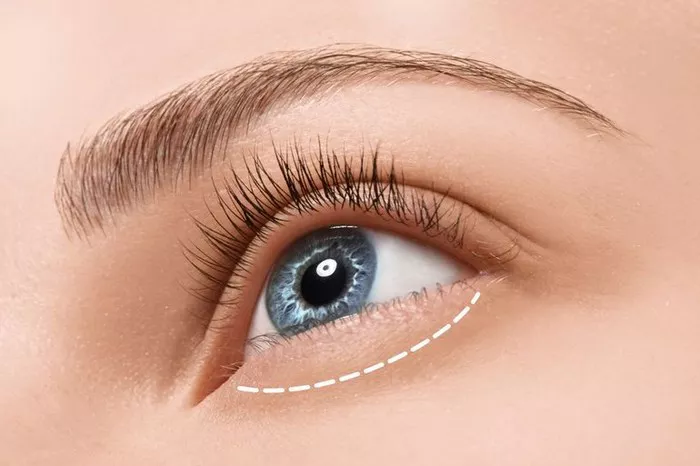Lower blepharoplasty is a surgical procedure designed to rejuvenate the lower eyelids by removing excess skin, reducing puffiness, and addressing under-eye bags. Swelling is a common side effect following lower blepharoplasty, and understanding its duration and management is crucial for individuals considering the procedure. In this article, we will delve into the topic of swelling after lower blepharoplasty, including its typical timeline, factors that can influence its duration, and strategies for managing and reducing swelling during the recovery process.
The Swelling Process
Swelling is a natural response of the body to surgical trauma and is an expected occurrence following lower blepharoplasty. Understanding the swelling process can help individuals prepare for what to expect during the recovery period:
Immediate Post-Operative Swelling: Swelling typically begins immediately after the surgery and is most pronounced in the first 24 to 48 hours. During this initial stage, the lower eyelids may appear puffy, swollen, and bruised. It is important to note that the extent of swelling can vary among individuals depending on factors such as surgical technique, individual healing response, and pre-existing conditions.
Peak Swelling: The swelling usually reaches its peak around the second or third day post-surgery. At this stage, the lower eyelids may exhibit significant puffiness and tightness. The swelling might also extend to the surrounding areas, such as the cheeks and upper eyelids. It is important to keep in mind that peak swelling can vary from person to person, and factors such as the extent of the surgical procedure and individual healing factors may influence its duration.
Subsiding Swelling: After the initial phase of peak swelling, the swelling gradually subsides over time. By the end of the first week, a noticeable reduction in swelling can be expected. However, it is important to note that some residual swelling may persist for several weeks or even months following the surgery, although it is typically less pronounced.
Long-Term Swelling: In rare cases, a small amount of residual swelling may persist beyond a few months. However, this residual swelling is often subtle and gradually resolves as the healing process continues. It is important to consult with the plastic surgeon if there are concerns about lingering swelling.
Factors Influencing Swelling Duration
Several factors can influence the duration and severity of swelling following lower blepharoplasty. These factors include:
Surgical Technique: The surgical technique employed during lower blepharoplasty can affect the extent of swelling. Techniques that involve the removal of excess fat or skin may result in more pronounced swelling, while less invasive techniques may lead to milder swelling.
Individual Healing Response: Each individual’s body responds differently to surgery, including the healing process and the resolution of swelling. Factors such as age, overall health, and genetics can influence how quickly swelling subsides.
Pre-existing Conditions: Certain pre-existing conditions, such as allergies, sinus problems, or thyroid disorders, can impact swelling after lower blepharoplasty. It is important to inform the plastic surgeon about any pre-existing conditions to assess their potential influence on the recovery process.
Post-operative Care: Following the post-operative care instructions provided by the plastic surgeon is crucial in managing swelling. Proper wound care, the use of cold compresses, and keeping the head elevated during sleep can all help reduce swelling and promote faster healing.
Managing and Reducing Swelling
While swelling is a normal part of the recovery process after lower blepharoplasty, there are several strategies that individuals can employ to manage and reduce swelling:
Cold Compresses: Applying cold compresses or ice packs gently to the lower eyelids can help reduce swelling and discomfort. However, it is important to follow the plastic surgeon’s instructions regarding the duration and frequency of cold compress application.
Head Elevation: Keeping the head elevated, especially during sleep, can help minimize swelling. Using an extra pillow or a wedge-shaped pillow to prop up the upper body can aid in reducing fluid accumulation in the lower eyelids.
Medications: The plastic surgeon may prescribe medications, such as oral steroids or anti-inflammatory drugs, to help reduce swelling. It is important to follow the prescribed dosage and consult the surgeon before taking any over-the-counter medications or supplements.
Avoiding Strenuous Activities: Engaging in strenuous activities or exercises that increase blood flow to the face can exacerbate swelling. It is advisable to avoid such activities during the initial stages of recovery.
Compression Garments: Some plastic surgeons may recommend the use of compression garments or wraps around the lower eyelids to help reduce swelling. These garments apply gentle pressure and aid in minimizing fluid accumulation.
Patience and Time: Swelling after lower blepharoplasty is a natural part of the healing process, and it takes time for the body to fully recover. It is essential to remain patient andfollow the post-operative instructions provided by the plastic surgeon. With time, the swelling will gradually subside, revealing the final results of the lower blepharoplasty.
Consulting with the Plastic Surgeon
It is important to maintain open communication with the plastic surgeon throughout the recovery process. They will monitor the healing progress and address any concerns or complications that may arise, including prolonged or excessive swelling. If there are any unexpected changes or if the swelling appears to be worsening instead of improving over time, it is crucial to reach out to the plastic surgeon for guidance and reassurance.
Conclusion
Swelling is a normal and expected side effect following lower blepharoplasty. Understanding the swelling process, its typical timeline, and the factors that can influence its duration is essential for individuals considering the procedure. By following the post-operative care instructions, employing strategies to manage and reduce swelling, and maintaining patience throughout the healing process, individuals can support their body’s natural healing mechanisms and achieve the desired results of a rejuvenated lower eyelid appearance. Remember, each individual’s healing process is unique, and it is important to consult with a qualified plastic surgeon for personalized guidance and care throughout the recovery journey.


